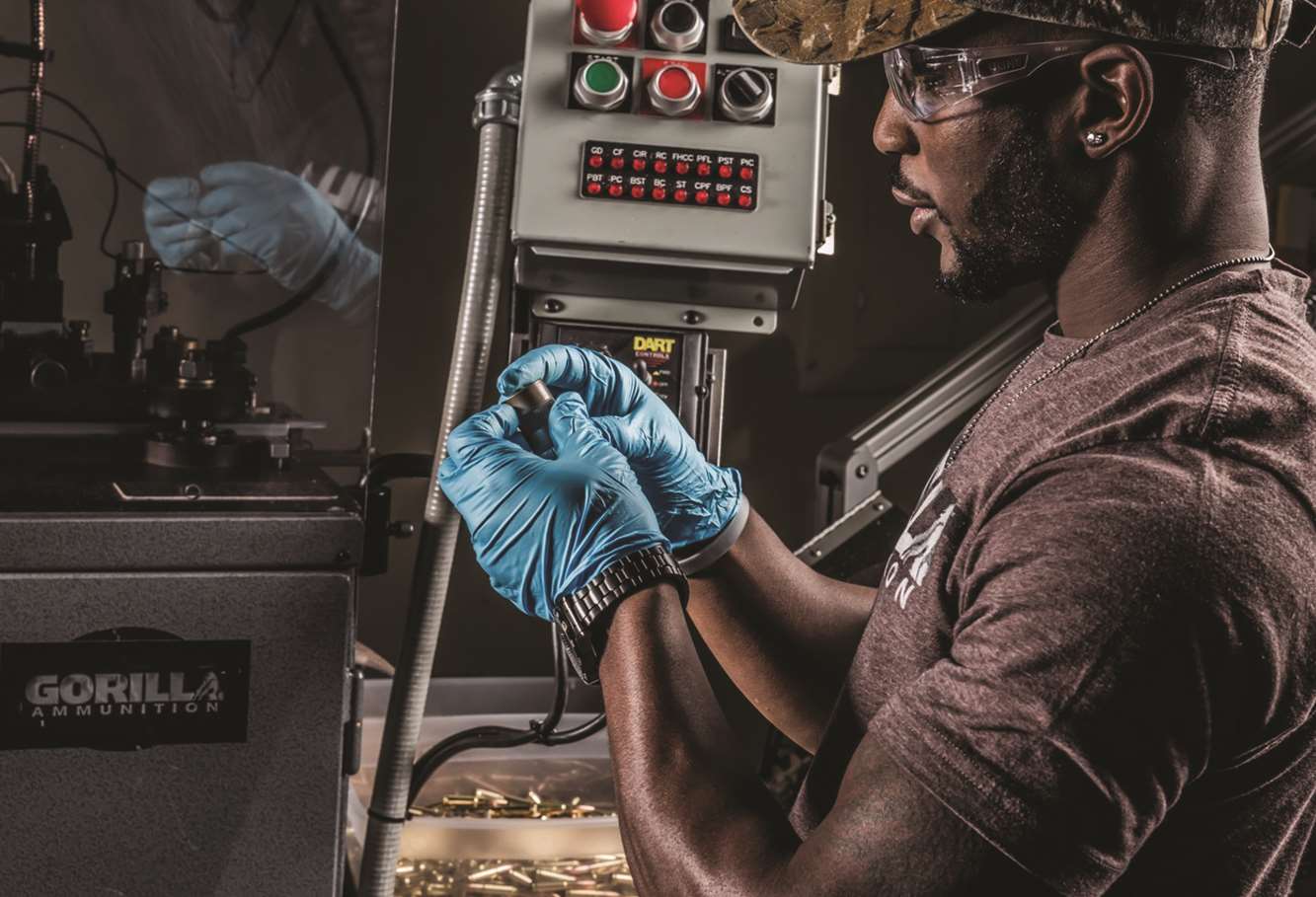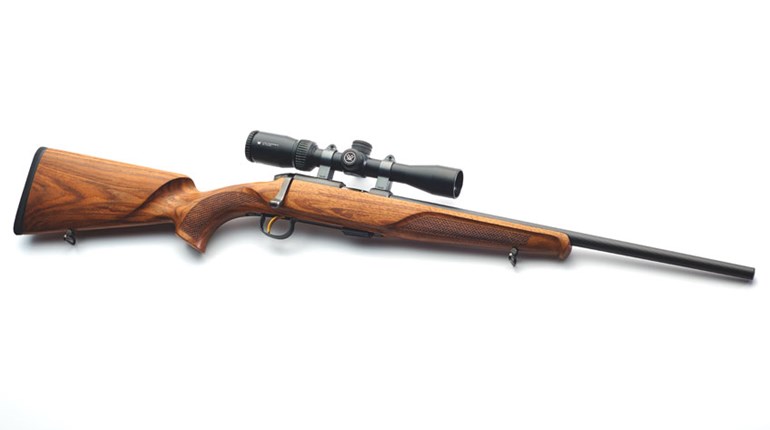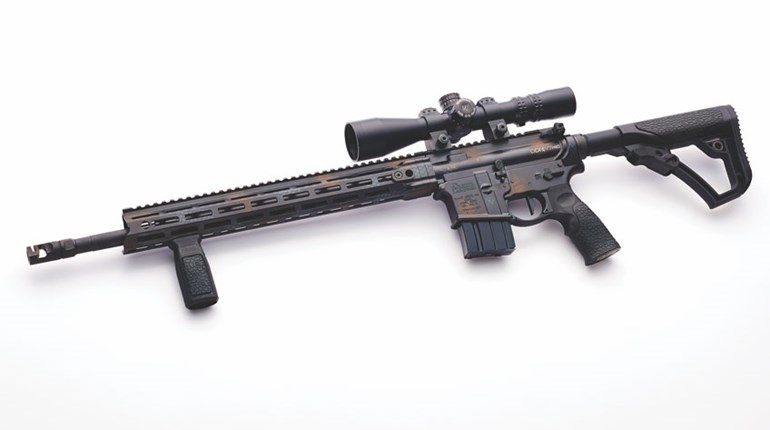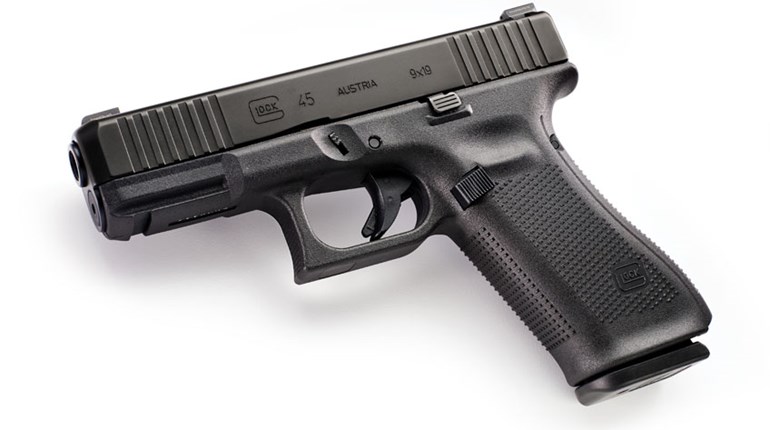
Now and again, we get to bring you an American Warrior story that has a little something extra, and today is one of those occasions. Not only is it a success story—a good idea, plenty of hard work, right place/right time/right people, etc.—but also one where some of the key players are those who’ve had that extra close-up view of what liberty really costs: our veterans.

We may, in fact, get a double dose of sorts with the Gorilla Ammunition story. As Sales and Marketing Director Jay Duncan—himself a former 101st Airborne Combat Engineer—told us, “30 percent of our employees are vets.” The company is also producing some of the best ammunition we know of (it was the accuracy winner in our October 2015 review of the Legendary Arms 704, for instance).
American Warrior: Jay, thanks for taking time to speak with us—we know things are hopping there in Vero Beach. Can you give us a little background on Gorilla?
Jay Duncan: Whenever I get asked about that, one thought predominates: “Look at all the things that had to happen!” <<Laughing>> I was pretty much fresh out of the Army, and met Tony Padgett while working at Knight’s Armament. Our paths parted when he left Knight’s for Cubic Defense, and I moved on to Daniel Defense.
A few years later, Tony and his brother Lanse did some work with a company called PCP Ammunition, a polymer-cased ammunition manufacturer, and—long story short—bought the company in 2010. Tony and Lanse brought me over to work the marketing end of the business, and we’ve been going like crazy ever since.
AW: The connection to PCP is news to us, though we’ve been watching the whole polymer-cased technology for a long time. What’s happening there?We’re adamant about our products making the warfighter more effective.
JD: It is a sort of chicken/egg relationship, but polymer was first for us. Tony is the genius at the technical aspects here: He took apart all the earlier attempts (which had almost no success), and found ways to fix virtually all the problems. Now, we’ve got SOCOM .50 BMG sniping ammunition in the field, as well as 7.62x51 for the M240 and Mark 48.
Besides the obvious cost advantage, there’s a 30-percent weight reduction over brass. We’re adamant about our products making the warfighter more effective, and we get at that two ways with polymer-cased ammo: It’s accurate and reliable, but also less punishing to move around, particularly when the moving is actually “carrying.” PCP ammunition helps in both circumstances—either more ammunition, or more of something else that saves lives or gets the mission accomplished in a superior way.
AW: And Gorilla?
JD: Tony and Lanse had about $5 million dollars invested in PCP, and plenty of technical expertise, but they wanted to apply it to a broader need they saw in the marketplace. Mainly, this was to look at the rifle/ammunition system, and not just as two components that (hopefully) match up. And there are still lots of things that are good about brass. It’s been around since the late 19th century for good reason, though the modern formulations are better.

This took us into some interesting areas. While we saw 7.62/.308 as a sort of must-have, there were also some vacuums out there. .300 Blackout was an obvious choice, or at least we thought so. As a smaller, more nimble company, we could get at this in a hurry. For 18 months or so, we dominated the channel for match-quality .300 subsonic, and it still does very well for us. The big manufacturers, of course, won’t ignore an opportunity like that forever, and you see Winchester and Hornady bringing out their own Blackout loads. But we’re having fun and still meeting market needs, all of which is a huge benefit to our customers. That’s what keeps us growing and motivated.
AW: Our results with the Gorilla match .308 Winchester have certainly been superb. It was a no-brainer for us when you offered to support the American Warrior rifle project for JR Salzman with some 175-grain ammunition, too.
JD: As you said, that was a “no-brainer”: For a world-class athlete like JR to choose service to our country the way he did, and at such personal cost, well, we couldn’t walk away from that.
AW: What do you see as you look ahead?
JD: We’re still a young company, and that in itself is a wonderful thing. It’s great to employ people in truly worthwhile work, especially when our efforts support the military and law enforcement shooters who are protecting our nation. But we try never to take our eyes off our civilian customers either: They’re part of a bigger equation that actually supports those “duty” shooters in a very important way.
This means we’re working on ammunition support for new calibers all the time—6.5 Creedmoor is a good example. The big guys could turn out a year’s supply tomorrow if they wanted to, but it really doesn’t make much sense at their scale. We can do a first rate job on a caliber like that. It meets the needs of our customers—which is good for our business—but also hones riflecraft in general. Hard to say what the future benefits of that may be, especially when you get back to thinking about our warfighters. If it makes their jobs safer and more effective, we want to be involved. It’s great to employ people in truly worthwhile work, especially when our efforts support the military and law enforcement shooters who are protecting our nation.
One thing we don’t waste time on is the “magic bullet” idea. We’ve all got knife blocks in our kitchens for a reason, and the same thing applies in our business: No projectile can do every job well—or at least it’s a long way off. That said, we’ve still got a very good new one, and it’s one of the reasons we’re expanding into pistol and self-defense ammunition.
AW: And that’s the “Silverback” line?
JD: Yes indeed. It’s available right now in four calibers: .380 ACP, 9 mm, .45 ACP for pistols (and carbines), and .300 Blackout. The 9 mm and .300 have subsonic variations, so they’ll work in a huge range of firearm types with no problem. They use our patent-pending Swiss turned solid copper projectile, which we designed for extremely precise expansion characteristics.
AW: I guess that’s our next conversation, then—a post-ammo test chat?
JD: We’ll make that happen.
AW: Thanks as always, Jay.

































